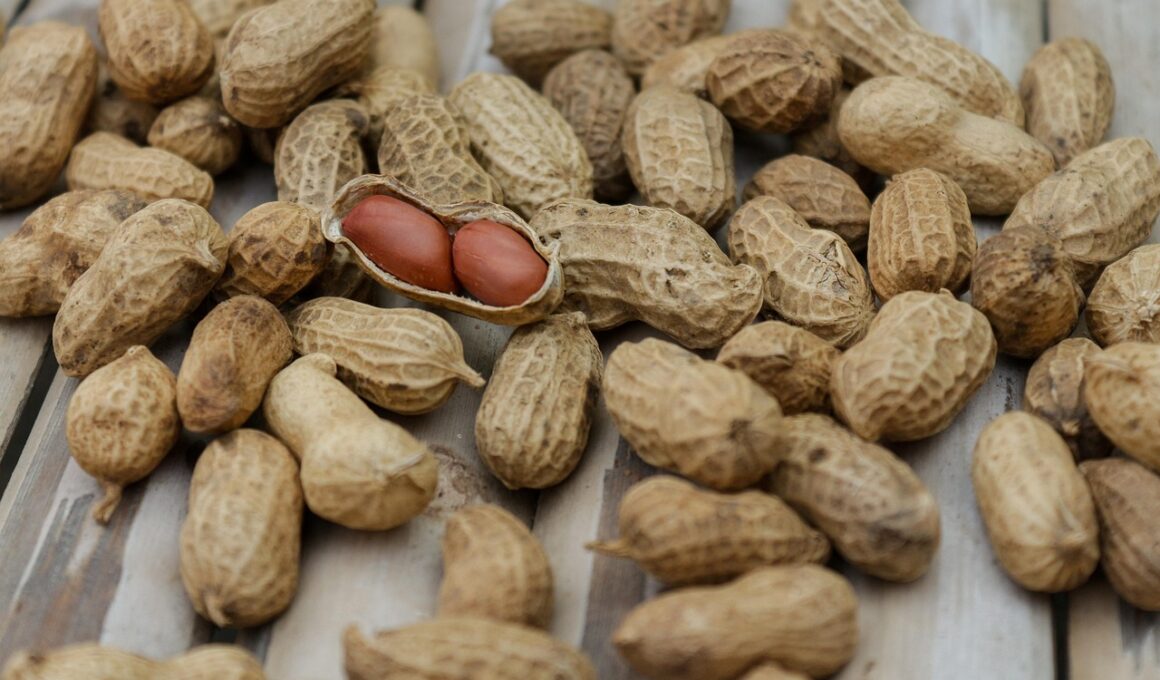How to Balance Proteins and Fats in Your Breeding Dog’s Diet
Nutrition is significantly important for breeding dogs as it impacts their health and reproductive success. A balanced diet includes proteins and fats that contribute to the overall growth and health of the dog. Proteins are essential for muscle development and cell regeneration, while fats provide essential fatty acids necessary for vitality. In the breeding phase, maintaining health requires careful attention to the protein and fat ratio. Generally, the protein levels should be higher than average to support the increased needs during reproduction, while fats must also be sufficient to boost energy levels. Selecting high-quality sources of proteins, such as chicken, beef, or fish, is vital for an optimal diet. Additionally, fats should be sourced from healthy oils like fish or flaxseed. Thus, creating a balanced meal plan that supports your breeding dog’s life stage through nutritional value is essential for well-being. Regular consultation with a veterinarian nutritionist can help customize diet plans based on specific needs, ensuring your breeding dog remains healthy and energetic throughout the breeding process. This combination of proteins and fats positively influences the fertility and general vitality of your dog.
When it comes to formulating a diet for your breeding dog, understanding the needs for proteins and fats can be challenging. Firstly, one must recognize that proteins are broken down into amino acids, which serves several functions in the body, including tissue repair and immune function. For breeding dogs, aim for at least 25% protein in their daily diet. This can be achieved by choosing high-protein dog food or supplementing with natural sources. On the other hand, fats play an equally vital role in energy provision and the absorption of fat-soluble vitamins like A, D, E, and K. It is beneficial to include fat sources in the diet, aiming for around 15%-20% of the total caloric intake. Healthy fats also support skin health and a shiny coat, which is crucial for dogs during breeding. Furthermore, always consider the source of proteins and fats; purchasíng premium dog food brands or preparing home-cooked meals can be beneficial. Ideally, a mix of dry kibble and wet food can also provide much-needed hydration while ensuring balanced nutrition for the reproductive phase.
Types of Proteins for Breeding Dogs
Not all proteins are created equal, and understanding which types can benefit your breeding dog is crucial. Animal-based proteins such as chicken, turkey, beef, lamb, or fish typically contain all essential amino acids dogs require for optimal health. These should be prioritized in your dog’s diet due to their high bioavailability and easier digestion. Conversely, plant-based proteins like beans or soy can be included but should not serve as the primary protein source. While they provide some amino acids, they lack certain essential requirements. In cases where your dog may have allergies or intolerances to specific animal proteins, consulting a vet to clarify alternative protein sources is important. Incorporating a variety of protein sources helps to prevent dietary boredom and offers different nutrients beneficial during pregnancy. High-quality dog food brands often feature a mix of multiple proteins to ensure that breeding dogs receive comprehensive nutrition that supports their overall health. As your dog progresses through gestation, continually evaluate their weight and condition to consider adjustments in protein levels when needed.
Working alongside protein intake, understanding how fats contribute to your breeding dog’s health is crucial. Healthy fats, particularly omega-3 and omega-6 fatty acids, support brain function and overall health in dogs. Fish oil is a popular fat source that not only boosts energy but also promotes a shiny coat, which is crucial for breeding animals. Additionally, supplementing with flaxseed or coconut oil can offer beneficial antioxidants and promote overall health. It is recommended to incorporate both saturated and unsaturated fats into the diet to ensure a balanced intake. Aim for a minimum of 15% fat in your dog’s regular diet; this is particularly important during pregnancy or lactation. Always ensure that fats come from high-quality sources to avoid unnecessary health difficulties. Excessive fat can lead to obesity and other metabolic issues, so it’s essential to follow the guidance of a veterinarian regarding the appropriate amount to include. Being consistent in monitoring your dog’s body condition score can also guide dietary adjustments, ensuring they receive adequate fats without exceeding healthy weight limits.
How to Measure and Adjust Dietary Intake
Measuring the right intake of proteins and fats is another must for ensuring balanced nutrition for your breeding dog. Utilize a food scale or measuring cups to portion dog food accurately, maintaining a consistent routine at each meal. This helps to avoid overfeeding and underfeeding issues. Begin by reading the dog food labels to understand the recommended amounts based on your dog’s weight and activity level. As your dog enters breeding, adjust the servings according to specific energy requirements, which may rise during the gestation period. It’s prudent to time meals to remain consistent with daily habits, aiding digestion. Incorporate regular feeding schedules, perhaps opting for three meals per day instead of two to help with the rising appetite. Observing how your dog reacts to the current diet is vital; noting any weight gain or loss guides necessary adjustments. Regular check-ins with a veterinarian can provide valuable insights into ensuring proper nutrition and may suggest dietary changes based on your dog’s health. Ultimately, adequate protein and fat intake will ensure a healthy reproduction cycle and care for the dog.
The quality of ingredients used in your dog’s diet is paramount; focus on selecting reputable brands recognized for their nutritional standards. It’s advisable to avoid foods with fillers or artificial additives that can harm your dog’s health or create digestion issues. A well-balanced diet that combines high-quality proteins and healthy fats can support a breeding dog’s unique needs and overall health. When choosing dog food, consider options that list a specific meat as the first ingredient, ensuring the majority of protein comes from that primary source. Furthermore, selecting a blend of kibble with added wet food can improve digestibility. Additionally, incorporating supplements may help fill any nutrient gaps, provided your vet endorses them. Being aware of your dog’s specific needs becomes crucial, especially when transitioning to a breeding-specific diet. Regularly evaluate their health response to dietary changes, including noted energy levels and if they maintain good body condition. Keeping a food journal helps track your breeding dog’s food intake, energy levels, and any unusual behaviors, aiding informed feeding decisions in this crucial stage.
Conclusion: The Importance of Balanced Nutrition
In conclusion, ensuring your breeding dog’s diet is well-balanced is key to achieving optimal health for both the mother and her puppies. The right combination of proteins and fats significantly enhances fertility, vitality, and the overall reproductive process. By selecting high-quality ingredients, monitoring portion sizes, and regularly assessing their health, you can create the ideal feeding plan that supports both stages of reproduction. Regular consultation with animal nutritionists will provide insights tailored to your dog’s unique conditions and help resolve any dietary issues that may arise. Keep in mind that changes will affect not only the mother but also her future litter. Therefore, giving your breeding dog the right nutrients from the start sets a strong foundation for their development and overall well-being. A controlled and systematic diet plan ensures that all essential vitamins, minerals, proteins, and fats contribute favorably to reproduction. Ultimately, the time and effort invested in maintaining a healthy diet for breeding dogs will positively impact litter survivability and overall quality, reflecting a successful breeding program.


